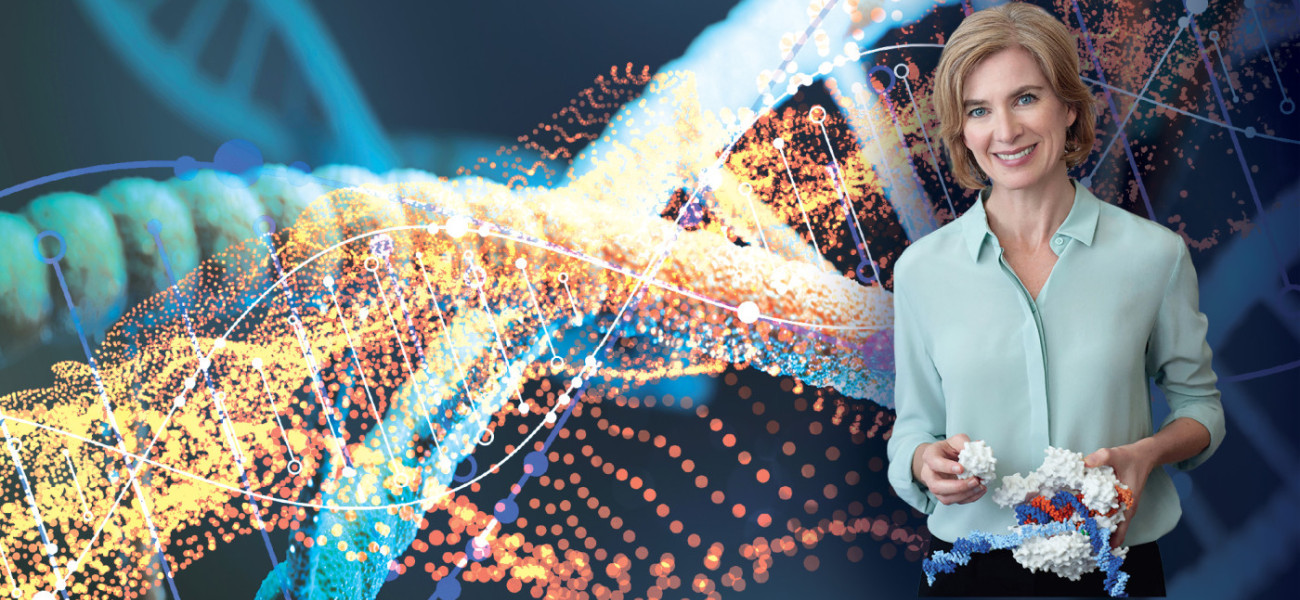
The National Energy Research Scientific Computing (NERSC) Center is inviting users to apply to the NERSC Science Acceleration Program (NESAP), an opportunity to shape the future of computational science on next-generation supercomputers.
Why apply?
Doudna (NERSC-10), arriving in 2026, is designed to deliver 10x the performance of Perlmutter and power the most complex scientific workflows, seamlessly integrating simulation, experimental/observational data analysis, and AI-driven discovery. NESAP will provide multi-year hands-on collaboration with NERSC and leading HPC vendors to optimize and accelerate your workflows, ensuring they are ready to take full advantage of cutting-edge system capabilities. All projects, users, and developer teams expecting to operate complex workflows at NERSC in 2026 and beyond are encouraged to apply.
What’s new in NESAP for Doudna?
Building on past successes in adapting code for energy-efficient architectures and reducing time-to-science, NESAP is now expanding its scope to tackle workflow challenges end-to-end, including performance, data movement and management, automation, and service integration.
Key highlights of Doudna’s advanced architecture include:
-
Innovative compute nodes powered by NVIDIA’s next-generation “Vera” Arm CPU + “Rubin” GPU superchip architecture.
-
Two next-generation storage systems, one to support established HPC workloads and another for consistent, high-performance I/O to meet the needs of time-sensitive workflows and AI training.
-
A large, heterogeneous partition of Workflow Environment Nodes, enabling user access and user-managed services that enhance scientific workflows within and beyond Doudna.
-
High-bandwidth, low-latency Infiniband XDR interconnect, linking compute nodes, storage systems, and Workflow Environment Nodes all together to support HPC, AI, and data workflows at scale.
Through software co-design, NERSC and vendor staff will gather NESAP teams’ requirements, then develop, deploy, and maintain capabilities complementing Doudna’s architecture to power advanced workflows. Such capabilities include the following:
-
Running persistent or ephemeral services supporting workflows (for example, databases, workflow engines, cloud-native workflow frameworks, AI inference front-ends, REST APIs) as is done today with Spin, but directly integrated with Doudna itself.
-
Coordinating dynamic workflow-supporting service deployments or specifying storage performance quality-of-service through new batch scheduler and REST API integrations.
-
Interacting with the system through customizable containerized software environments that can also be used externally to the system (for example, a laptop for development and testing, CI/CD pipelines for automated build and deployment, or shared with users in the cloud).
-
Leveraging tools and workflow templates (for example, distributed AI model training, and coupling AI with modeling/simulation) that enable rapid workflow development as well as end-to-end monitoring, profiling, and optimization of workflows as they propagate through the system.
-
Interoperating with other resources developed through the emerging Department of Energy Office of Science Integrated Research Infrastructure initiative.
What resources does NESAP offer teams?
Participants may take advantage of a number of opportunities to prepare for Doudna:
-
NERSC workflow readiness staff assistance with workflow adaptation, prototyping, profiling, and/or optimization, as well as co-design on NERSC-supported capabilities.
-
Eligibility for a postdoctoral researcher to be assigned to collaborate with your team on workflow porting, performance optimization, and enhancement through new software capabilities.
-
Collaboration with vendor staff to assist with workflow performance optimization, AI model development/deployment, and advanced workflow technology integration.
-
Computing time on Perlmutter: Up to 5,000 GPU node hours in 2025 and 10,000 node hours in 2026 for workflow development, testing, optimization, scaling, and debugging.
- Priority access to in-depth Spin training events, to enable teams to prototype containerized services that will support workflows on Doudna.
-
Access to training sessions and hackathons.
- Early access to Doudna.
What is expected of NESAP teams?
Selected teams will be responsible for the following:
- Setting clear, specific, and measurable computational science objectives .
- Designating a technical point-of-contact for their team, ideally, but not necessarily, the individual submitting the proposal.
- Staffing your team for this work appropriately. Robust engagement is the best predictor of a team’s chances for success.
- Delivering intermediate and final progress reports detailing science results, performance improvements, and workflow enhancements enabled by NESAP.
Apply now
We encourage applications from teams addressing workflow bottlenecks, data and control flow challenges, and forward-looking research workflow designs. Whether you’re optimizing for new models, methods, or experimental techniques, NESAP is your gateway to making the most of Doudna’s powerful ecosystem.
The deadline for applications is now July 16, 2025 (originally July 9, 2025), end of day, anywhere on Earth.
Got questions? Want to discuss an idea?
NERSC is hosting a series of office-hours-style drop-in sessions about the NESAP for Doudna program call for proposals. If you have any questions or want to discuss your ideas for a proposal with NERSC staff, please drop in. You may also email the NESAP team with your questions.